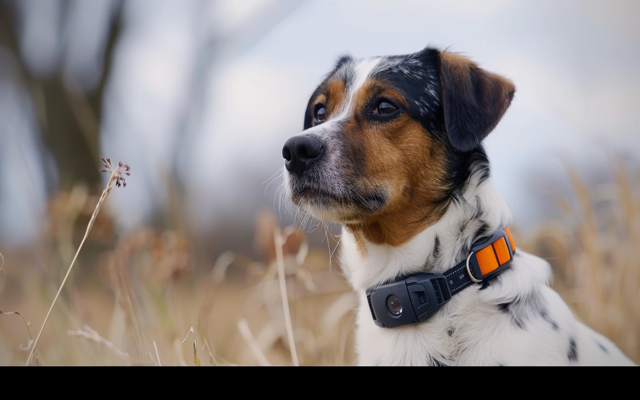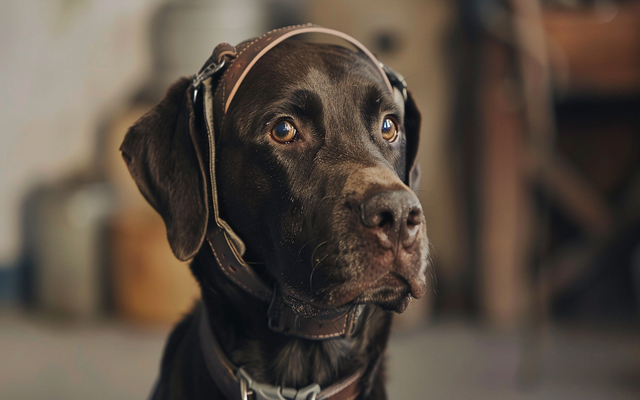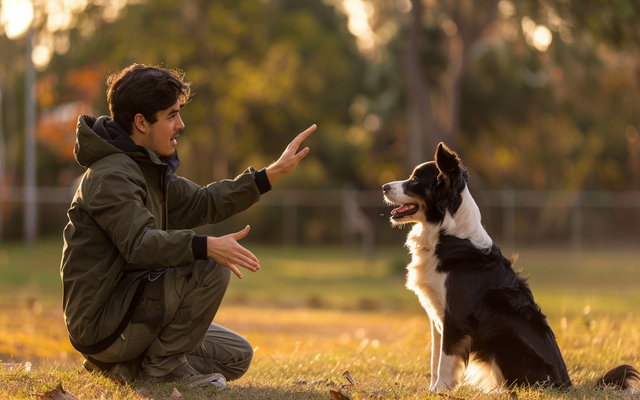Let’s face it, sometimes our furry pals just don’t want to listen. They pull on the leash like they’re training for the Iditarod, bark at every squirrel like it’s a personal insult, or ignore our calls to “come” as if they haven’t heard us their entire lives. We try everything – treats, pleading, maybe even a little frustrated shouting – and they just look at us with those big puppy-dog eyes.
So, what do you do when your normally sweet pup turns into a stubborn little mule? That’s where the idea of a training collar comes in. Maybe a little beep or vibration will get their attention, right? Or, in those extreme cases, maybe something stronger is needed. But before we strap anything on our dogs, we need to get real about what training collars are – and when (or if!) they’re the right solution.

A Word of Caution: Collars Aren’t Magic
Let’s get this straight: a training collar won’t magically turn your dog into a canine Einstein. Think of it like this – if your kid is struggling in math, buying them a fancy calculator helps, but it doesn’t fix the problem that they don’t understand the concepts. Our dogs are the same way! Understanding why they’re being stubborn is the key to real change.
Understanding Dog Behavior
Why Won’t My Dog Listen? Unlocking Canine Behavior
Before we even think about collars, we gotta get inside our dog’s head. Why are they acting this way? Here’s the thing, just like us, dogs don’t misbehave just for the fun of it. Common culprits include:
- Fear or Anxiety: Maybe that barking is a scared reaction, not a defiance.
- Boredom or Lack of Mental Stimulation: Dogs need walks and brain games!
- Unclear Expectations: Have we actually taught them what we want?
- Medical Issues: Sometimes pain or illness can make a dog irritable.
Decoding Your Dog: Canine Communication 101
Dogs talk to us all the time, but not always with words! Pay attention to:
- Body language: Tail wags, ear position, are they tense or relaxed?
- Barks, Whines, Growls: Different sounds mean different things (playful, fearful, etc.).
- Canine Communication: Dogs talk to us all the time, but not always with words! Pay attention to body language… To learn more, check out this resource on understanding dog body language from the American Society for the Prevention of Cruelty to Animals (ASPCA)
The Power of Positive Reinforcement
No matter what collar you use (or don’t use), positive reinforcement is KEY. This means rewarding the behaviors you do want. Think of it like this: if your boss only yelled when you messed up, but never praised your good work, you’d feel pretty crummy. Dogs are the same way!
Exploring Training Collar Options
Collar Choices: The Good, the Bad, and the Controversial
Okay, let’s break down the types of collars out there. Remember, no collar is a magic fix, and some come with serious risks if used the wrong way.
- Beep/Vibrate Collars: These are the gentlest option – basically, a remote-controlled way to get your dog’s attention. Good for basic stuff, but unlikely to stop a determined dog in a high-distraction situation.

- Spray Collars (Citronella): Delivers a startling burst of citronella scent when triggered. These are pretty harmless, but more often annoying than truly effective for serious stubbornness.
- Static Correction Collars (“E-Collars” or “Shock Collars”): Here’s where things get heated. These deliver varying levels of electric stimulation. Used responsibly by trained professionals, they can be a tool, but the potential for abuse is huge. If you’re considering this route, don’t DIY it – seek out expert guidance.
Beyond the Basics: Tech-Focused Training Collars
Technology is changing everything, even dog training! Here are some newer options:
- GPS Tracking Collars: If your main worry is your dog taking off, these let you track their location. Less about training, more about peace of mind.
- Remote Training Apps: Some collars now pair with your phone, letting you control settings with a tap. Important note: these still require understanding of training principles!
DIY Training Tools
Let’s be honest, fancy collars are expensive. Some DIY alternatives exist, but use with extreme care:
- Head Halters: Gentle leads that work with a dog’s natural instincts, great for pulling. But improper fit can be risky. Consult a pro for guidance.

Choosing the Right Training Method
It’s Not Just About the Collar
The biggest decision isn’t just about which collar (if any) to use, it’s about your whole approach to training. Here’s where things get personal – there’s no single right answer for everyone.
Consider Your Dog, Consider Yourself
Ask yourself these questions:
- My Dog’s Temperament: Are they sensitive and easily startled? Or a thick-skinned goof who shrugs off most things? This matters big time!
- The Problem Behavior: Is it pulling on a leash, barking, or something more serious like aggression? Matching the tool to the problem is crucial.
- My Comfort Level: Be honest – are you okay with using a method that may cause discomfort? If not, there are plenty of other effective options!
Temperament Testing: A Hidden Gem
A lot of trainers recommend temperament testing before trying stronger training methods. This isn’t about judging your dog, it’s about understanding their sensitivity level and what kind of corrections will work (or backfire spectacularly!).

Desensitization and Counterconditioning: Collar-Optional Solutions
These fancy terms mean helping your dog overcome fear or re-wire their reactions.
- Example: Dog barks at strangers? Instead of correction, gradual desensitization with treats and praise teaches them strangers = good things! Takes time, but often more effective long-term.
Resources are Your Friends
Here are some trustworthy places to learn more:
- American Veterinary Society of Animal Behavior: Find position statements on training methods (https://avsab.org/)
- Certification Council for Professional Dog Trainers: Helps you find qualified trainers in your area (https://www.ccpdt.org/)
Using Any Training Tool Responsibly
Collars Are Tools, Not Solutions
If you do choose a training collar, remember these golden rules:
- Training, Not Punishment: Collars should be used for clear communication during training sessions, not just zapping your dog whenever they mess up.
- Start Low, Go Slow: Always use the lowest effective setting on a training collar and gradually increase if needed.
- Pair with Positives: A beep shouldn’t mean “stop that!”, it should mean “do this good thing instead and get a treat!”.
Clickers and Kindness: The Collar-Free Approach
Clicker training is all about pinpointing the exact moment your dog does the right thing and marking it with a click – followed by a reward! It’s shockingly effective for many dogs.
Redirection Power
Sometimes, the best “tool” is distraction and redirection. Dog charging the mailman? Before they get worked up, call them excitedly and play their favorite game instead. This takes practice but can prevent bad habits from forming.
Seek Help When You Need It
Feeling lost or frustrated? Don’t be afraid to call in the pros! A good trainer won’t judge, they’ll help you find what works for you and your furry pal.
Building a Strong Bond with Your Dog
The Best Training Tool is Love
Sounds cheesy, but it’s true! A dog who trusts and loves you will be way more eager to learn and please you than one who’s scared or confused. So, how do we build that bond?
- Playtime is Training Time: Tug-of-war, fetch, silly games – these aren’t just fun, they build cooperation and communication.
- Mental Exercise Matters: Puzzle toys, learning fun tricks – it keeps their brains sharp and tires them out better than a long walk sometimes.
- Just Chill Sometimes: Quiet time hanging out on the couch is bonding too! Our dogs love nothing more than being near us.
A Happy Dog is a Trainable Dog
Make sure your pup’s basic needs are met: good food, exercise, vet care. A dog who feels good is more likely to have the energy and focus to learn.
Conclusion
Training collars can be one part of the puzzle for some dogs, but they’re never the whole solution. Focus on understanding your dog, using positive methods, and nurturing that special bond you share. The rewards will be a well-behaved pup and a friendship that lasts a lifetime.

FAQs
Can a training collar help with leash pulling?
Some collars can help, but it’s important to address the root cause of pulling. Consider head halters or vibration collars alongside positive training methods.
Harness or collar for training?
Harnesses are often safer for everyday use. Head halters offer more control for pulling. Some training collars may be effective if used responsibly within a positive training plan.
My dog is aggressive, will a training collar help?
No. Aggression requires professional help. Training collars can be dangerous if misused with aggressive dogs. Seek guidance from a qualified trainer or behaviorist.
Can a training collar damage my bond with my dog?
If used incorrectly, yes. Prioritize positive reinforcement and use any collar as a communication tool, not a punishment. Focus on building trust and understanding.
Is my dog too sensitive for a correction-based collar?
Possibly. Temperament testing can help assess your dog’s sensitivity. If your dog is easily startled or anxious, opt for positive reinforcement methods instead.

My job is to make sure every fact is right and every article is a joy to read. I’m kind of like a dog trainer for information – I make it behave!

